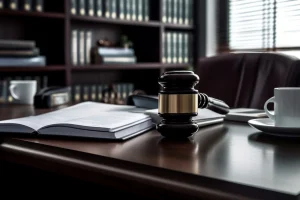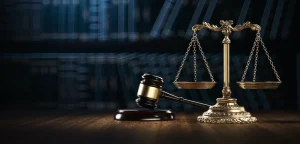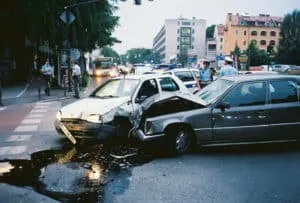Definition of property damage after a personal injury accident in LA
Property damage after a personal injury accident in LA refers to the physical harm or destruction done to a person’s belongings or property due to the accident. This can include damage to vehicles, homes, personal items, or any other property that is affected by the incident. When a personal injury occurs, it is important to understand the extent of the property damage to pursue compensation for repairs or replacement.
It is essential to document all property damage with photographs, receipts, and estimates to accurately assess the accident’s impact and seek appropriate restitution. In LA, property damage after a personal injury accident is a key component in determining the full scope of the damages and in seeking fair compensation for the losses incurred.
Understanding Property Damage Claims
Property damage claims can arise from various types of damage, including water damage, fire damage, theft, vandalism, and damage caused by items or products.
When filing a property damage claim with an insurance company, it is important to document the damage with photos and gather any relevant receipts or invoices. The next step is to contact your insurance company to file a claim. An adjuster will then assess the damage and determine the coverage and compensation you are entitled to.
Legal action may be necessary if compensation is not readily available through insurance. This may involve hiring a lawyer to pursue a lawsuit against the responsible party or to negotiate with the insurance company for fair compensation.
In the event of damage to your property, it is crucial to act swiftly and follow the correct steps to ensure proper documentation and timely filing of the claim to maximize your chances of receiving compensation. Understanding the types of damage, insurance process, and legal options can help protect your property and finances in the event of damage.
Importance of property damage claims in personal injury cases
Property damage claims play a vital role in personal injury cases, allowing individuals to seek compensation for damages to their vehicle and personal property. In the event of an accident or injury caused by someone else, property damage claims enable the affected party to recover the costs associated with repairing or replacing their damaged property.
Property damage claims are typically resolved through insurance companies, which will assess the extent of the damage and provide compensation accordingly. However, if the insurance coverage is insufficient or the other party disputes liability, legal action may be necessary to ensure fair compensation. In cases where injuries have been sustained, property damage claims can also be intertwined with personal injury claims, making it essential to seek legal representation to navigate the complexities of the legal process.
Property damage claims are crucial in personal injury cases as they allow individuals to recover property damage costs and pursue fair compensation for their losses. It is important to understand the role of insurance companies and the potential need for legal action to seek the appropriate resolution for property damage and injuries caused by another party.
Role of insurance companies in handling property damage claims
Insurance companies are crucial in handling property damage claims and assessing and compensating policyholders’ losses. When a property is damaged for various reasons, such as natural disasters, accidents, or vandalism, the insurance company investigates the claim, determines the damage’s extent, and provides financial assistance to the policyholder.
From conducting inspections to negotiating settlements, insurance companies play a pivotal role in ensuring that property owners are properly compensated for their losses. Furthermore, they provide support and guidance throughout the claims process, easing the burden on policyholders during a challenging time. Ultimately, insurance companies serve as a vital resource for property owners in the aftermath of damage, offering financial protection and peace of mind.
Types of Property Damage
Property damage covered by insurance in personal injury accidents encompasses a wide range of incidents. This includes water damage, such as damage caused by burst pipes or flooding. For example, if a personal injury accident results in a burst pipe, leading to water damage in the home, insurance may cover the cost of repairing the damage.
Fire damage is another type of property damage covered by insurance. If a personal injury accident leads to a fire, which damages the property, insurance may cover the cost of repairing or rebuilding the damaged areas.
Theft is also covered under insurance plans. If a personal injury accident results in theft of personal belongings or damage to the property due to a break-in, insurance may provide coverage for the stolen items and any necessary repairs.
Vandalism is another type of property damage covered by insurance. For instance, if a personal injury accident results in vandalism to the property, such as broken windows or graffiti, insurance may cover the cost of repairing the damage.
Understanding the various types of property damage covered by insurance can help individuals ensure that they have the appropriate coverage in place to protect their property in the event of a personal injury accident.
Physical damage to vehicles and other personal property
After a car accident, the first step when addressing physical damage to vehicles and personal property is to ensure everyone’s safety and seek medical attention if needed. Once it is safe to do so, document the damage by taking photos and gathering important information such as license plate numbers, insurance details, and the contact information of any other parties involved.
The next step is to differentiate between real property and personal property damage. Real property refers to damage to buildings or fixtures, while personal property includes damage to items such as clothing or electronics in the car. Real property damage can occur when a vehicle collides with a building or other structure, while personal property damage can happen when items inside the vehicle are impacted during the accident.
When filing a claim with your insurance company for property damage, be sure to provide all necessary documentation, including the police report, photos, and any other relevant evidence of the damage. It is important to thoroughly review your insurance policy and follow the specific filing procedure outlined by your insurance company to ensure a smooth claims process.
Structural damage to buildings and infrastructure
Structural damage to buildings and infrastructure can result from various factors such as natural disasters, aging, poor construction, or lack of maintenance. This type of damage poses significant risks to public safety and the functionality of essential facilities. Identifying, assessing, and addressing structural damage is critical to ensuring the stability and resilience of buildings and infrastructure.
In this section, we will explore common causes of structural damage, the potential consequences, and strategies for prevention and mitigation. Additionally, we will discuss the role of engineering and construction practices in designing and maintaining structures to withstand external forces and environmental conditions, ultimately minimizing the risk of structural damage.
Insurance Policies and Property Damage Coverage
Insurance policies provide coverage for property damage in a few different ways. Firstly, they usually cover damage to the house and garage caused by events such as fire, windstorms, hail, and vandalism. Insurance also covers personal items within the home that are damaged or stolen. Injuries or property damage caused by personal negligence, such as someone slipping and falling on ice on your driveway, are also typically covered by insurance policies.
Some types of property damage commonly covered by insurance include water damage, which can occur from burst pipes or leaking appliances, and freezing damage from cold temperatures. Insurance policies can help cover recovery costs, such as building repairs or personal items replacement when property damage occurs.
This can include the cost of hiring professionals to clean up and restore the property and any temporary lodging expenses if the damage makes the home temporarily uninhabitable. Overall, insurance policies provide valuable coverage for various property damage incidents, helping to alleviate some of the financial burden of unexpected disasters.
Overview of insurance policies that cover property damage claims
Various insurance policies, including homeowners insurance and auto insurance, can cover property damage claims. Homeowners insurance covers damage to the home’s structure and personal belongings and liability for injuries caused by personal negligence. This may include damage from events such as fire, theft, vandalism, and certain natural disasters.
Additionally, it can cover injuries sustained by others on the property due to negligence. Auto insurance covers damage to the vehicle and personal property inside the vehicle and liability for injuries caused by personal negligence in an automobile accident.
Property damage covered under these policies can include water or freezing damage, structural damage, and damage to personal belongings. When filing a property damage claim, policyholders should contact their insurance company to report the damage and provide documentation, such as photos and receipts, to support the claim. The insurance company will then assess the damage and determine the appropriate coverage and compensation.
Different types of coverage available for property damage claims
Regarding property damage claims, various types of coverage are available to help protect your assets and provide financial support in the event of unexpected damage. Understanding the different options for coverage is essential for property owners to ensure they have the appropriate insurance for their specific needs.
Knowing the types of coverage available, from homeowners insurance to commercial property insurance, can make all the difference when filing a property damage claim. We’ll explore the various types of coverage available for property damage claims, including what each type entails and how it can benefit property owners in times of need.
The Process of Filing a Property Damage Claim
The process of filing a property damage claim starts with gathering evidence of the damage, including photos, videos, and any relevant documentation, such as repair estimates or receipts. Contacting the responsible party or their insurance company to pursue the claim is important. This may involve obtaining their contact information and policy details if they are insured.
Documentation is a crucial part of the process and includes keeping records of any communication related to the claim, as well as any written statements or witness accounts. It is also important to prepare any necessary forms or paperwork required by the insurance company or legal professional.
In some cases, it may be necessary to seek legal assistance to ensure the claim is handled properly and represents the claimant’s best interests. This can involve contacting a legal professional who specializes in property damage claims and can provide guidance and representation throughout the process.
By following these steps and providing all the necessary information and documentation, claimants can effectively pursue a property damage claim and seek the compensation they are entitled to.
Steps involved in filing a claim for property damage after a personal injury accident
If you have been involved in a personal injury accident that resulted in property damage, it is important to know the steps involved in filing a claim to ensure that you receive the compensation you are entitled to. Filing a claim for property damage after a personal injury accident involves several important steps, from gathering evidence and documentation to communicating with insurance companies and negotiating a settlement.
Comprehending the process and knowing what to expect can help you navigate the often complex and daunting task of filing a property damage claim. Below are the essential steps involved in filing a claim for property damage after a personal injury accident.
Who to sue: It’s not always easy to tell who is responsible for damage
Potential parties that can be sued in a property damage lawsuit may include insurance companies, third parties, and other liable parties. Factors determining liability include negligence, duty, and the circumstances that led to the damage.
Parties that may be held accountable for property damage in personal injury accident cases can include the driver at fault, the vehicle’s owner, the manufacturer of a defective product, the property owner where the accident occurred, and even the employer of a negligent employee.
For example, if a car accident results in property damage, the driver at fault, the owner of the vehicle, and their insurance company may be held accountable. If a defective product causes an accident, the manufacturer or seller of the product may be sued for damages.
Multiple potential parties can be held liable for property damage in personal injury accident cases, and determining the responsible party may require careful examination of the circumstances and legal expertise.
Insurance companies may be sued if they fail to uphold their duty to provide coverage for legitimate claims, resulting in property damage expenses for the policyholder. Understanding the potentially liable parties and the circumstances of the damage is crucial in pursuing a property damage lawsuit.
Where to sue: Which county should the case be in (venue)
Several factors must be considered when determining the appropriate county venue for filing a California personal injury or property damage lawsuit. The primary factor is where the injury occurred, as the lawsuit is typically filed in the county where the incident occurred. Additionally, if the defendant lives or does business in a different county, the lawsuit may need to be filed there instead.
In California, jurisdictional requirements for filing a lawsuit also play a role in determining the appropriate county venue. For example, if the damages are below a certain threshold, the lawsuit may need to be filed in a lower court with the corresponding jurisdiction.
In the case of Los Angeles County, it is essential to consider specific venue rules and regulations that may apply. Los Angeles County has its own set of rules and procedures for filing a lawsuit, and it is crucial to adhere to these when determining the appropriate county venue.
It is essential to carefully consider where the injury occurred, where the defendant resides or does business, and the jurisdictional requirements when determining the appropriate county venue for filing a personal injury or property damage lawsuit in California.
Insurance: Check to see if insurance will cover the damage
When assessing whether insurance will cover the damage, the first step is to contact your insurance company and report the incident. This communication is crucial for understanding the specific coverage outlined in your policy. The insurance provider will guide you through the next steps, which may include submitting a claim and providing evidence of the damage.
Insurance policies typically cover a range of damages, such as property damage and personal injuries. Property damage may include damage to your home, car, or other personal belongings, while injury coverage may include medical expenses and liability claims. It’s essential to thoroughly review your policy to understand the extent of your coverage.
It’s important to report any incident to your insurance provider as soon as possible, as delaying may affect the outcome of your claim. Be prepared to provide details and documentation of the damage, such as photos, receipts, and any relevant reports.
In conclusion, the process of checking if insurance will cover the damage involves effective communication with your insurance company and a clear understanding of your policy coverage. You can navigate the insurance claims process efficiently and effectively by promptly reporting the incident and accurately assessing the damage.
Causes of action: What are the causes of action, and what is the proof
Causes of action refer to the grounds on which a plaintiff can bring a lawsuit against a defendant. Two common causes of action are negligence and battery.
Negligence requires the plaintiff to prove four elements: duty, breach, causation, and damages. For example, if a driver fails to stop at a red light and collides with another car, causing injury to the other driver, the injured party may have a cause of action for negligence against the at-fault driver.
Battery, however, requires the plaintiff to show that the defendant intentionally caused harmful or offensive contact with the plaintiff’s person without consent. An example of battery could be a person physically assaulting another person without provocation.
Other potential causes of action include defamation, intentional infliction of emotional distress, and wrongful death. Each cause of action has specific elements that must be proven to be successful in court. When pursuing a lawsuit, it is crucial for plaintiffs and their legal representatives.
Proof: What evidence do you have to prove your side
When gathering evidence to prove your side in an accident case, it is essential to collect various types of proof. This includes taking photos of the accident scene, vehicle damage, and any physical injuries sustained. These images should be clear and detailed to accurately depict the extent of the damage.
Additionally, collecting medical bills, doctor’s reports, and any other medical documentation related to the injuries is crucial to show the extent of the harm caused by the accident. Witness statements can also be valuable evidence to support your claim. It’s important to obtain their contact information and a detailed account of what they observed.
Obtaining the police report from the accident is essential as it provides an official record of the incident. Following the rules of evidence is important to ensure that the proof you gather will be considered in court. If dealing with a severe injury case, it may be beneficial to consult with a personal injury attorney who can provide guidance on the evidence needed to support your claim and navigate the legal process effectively.
Damages: What damages have you suffered, and how much to ask for
If you have suffered damages, you may be eligible to sue for various forms of compensation. This can include medical expenses incurred due to the incident, such as hospital bills, medication, and therapy.
Further, you may seek restitution for lost wages due to an inability to work or attend to your normal duties. Ongoing damage, such as long-term physical or mental health issues directly related to the incident, can also be included in the lawsuit. Finally, emotional distress caused by the situation is also a compensable damage.
The amount one may ask for in compensation will vary depending on the case’s specifics and the extent of the damages suffered. This can range from a few thousand dollars for minor injuries and emotional distress to hundreds of thousands or even millions for severe or permanent damage. It’s essential to consult with legal professionals to determine the appropriate amount to seek in damages based on the case’s unique circumstances.
Documentation required for the claim process
When filing a claim, certain documentation is required to support your case and ensure a smooth and successful process. Whether you are submitting a claim for insurance, a refund, or a warranty, it is important to have the necessary paperwork and proof to back up your claim.
This documentation validates your claim, helps expedite the process, and provides the necessary information for the decision-making party to review. Without the proper documentation, your claim may be delayed, denied, or require additional follow-up, causing unnecessary frustration and inconvenience. Therefore, understanding the specific documentation needed for the claim process is crucial in ensuring a successful outcome.
Evaluating Property Damage Claims
When evaluating property damage claims related to a personal injury accident, it is important to consider the different types of property damage that may qualify for a claim. Property damage includes vehicle damage, such as dents and scratches, personal belongings like electronics or clothing, and damage to a home or other property.
You may qualify for a property damage claim if your vehicle is damaged in a car accident due to another driver’s fault. Similarly, if you were injured in a slip-and-fall accident at a grocery store and your phone was damaged in the fall, you could also file a claim for the cost of repairing or replacing your phone.
When filing a property damage claim, it is important to document the damage with photographs, obtain repair estimates, and gather any relevant receipts or documentation. Working with the insurance companies involved is also important, as they will typically handle the property damage claim process.
In some cases, legal action may be necessary if the insurance companies are not cooperating or if the damages exceed the coverage limits of the responsible party. This is when hiring a personal injury attorney can be beneficial to ensure that you receive fair compensation for your property damage.
Factors considered when assessing the value of property damages
When assessing the value of property damages, several factors must be considered. The property’s market value is a primary consideration, as it provides an indication of the worth of the property in its current condition. The cost to replace the damaged property is also important, reflecting the financial impact of restoring or replacing the item.
Also, the object’s sentimental value may be considered, although courts may struggle to put a figure on this aspect. Nonetheless, sentimental value can play a role in determining the overall value of the damages. Lastly, any additional costs or expenses incurred due to the property damage, such as repair or relocation costs, should be factored in when assessing the value of the damages.
Courts may attempt to quantify the sentimental value of the object by considering its unique attributes, personal significance, and emotional attachment to the owner. Reimbursement entitlements for costs and expenses connected to the property damage will depend on the specific circumstances and the applicable laws. It is important to provide documentation and evidence of any additional costs or expenses to support the claim for reimbursement.
Consult with the LA Property Damages Experts at Phoong Law
If you’ve experienced property damage in Los Angeles, a property damage lawyer can help you recover compensation for your losses. LA’s common types of property damage include vandalism, fire, water, and earthquake damage. A property damage lawyer can assist in assessing the extent of the damage, gathering evidence, negotiating with insurers, and taking legal action if necessary to ensure you receive the compensation you deserve.
Your insurer plays a crucial role in these situations by assessing the damage, processing your claim, and providing the necessary funds for repairs or replacements. However, insurers may sometimes undervalue or deny legitimate claims, which is where a property damage lawyer can step in to ensure that you are treated fairly.
If you’re dealing with property damage after a personal injury accident in Los Angeles and need help recovering compensation, contact Phoong Law at 866-GOT-PAIN or message them for expert legal assistance. Don’t let property damage go uncompensated – consult with our LA property damage experts today.
Disclaimer: The information provided in this blog post is for general informational purposes only and should not be construed as legal advice. Every car accident case is unique, and you should always consult with an attorney to discuss your case’s specific facts and circumstances.
While Phoong Law strives to provide accurate and up-to-date information in this blog post, the law is constantly evolving, and additional factors or exceptions may apply to your case. Phoong Law makes no warranties or representations as to the accuracy of the information contained in this blog post.
























